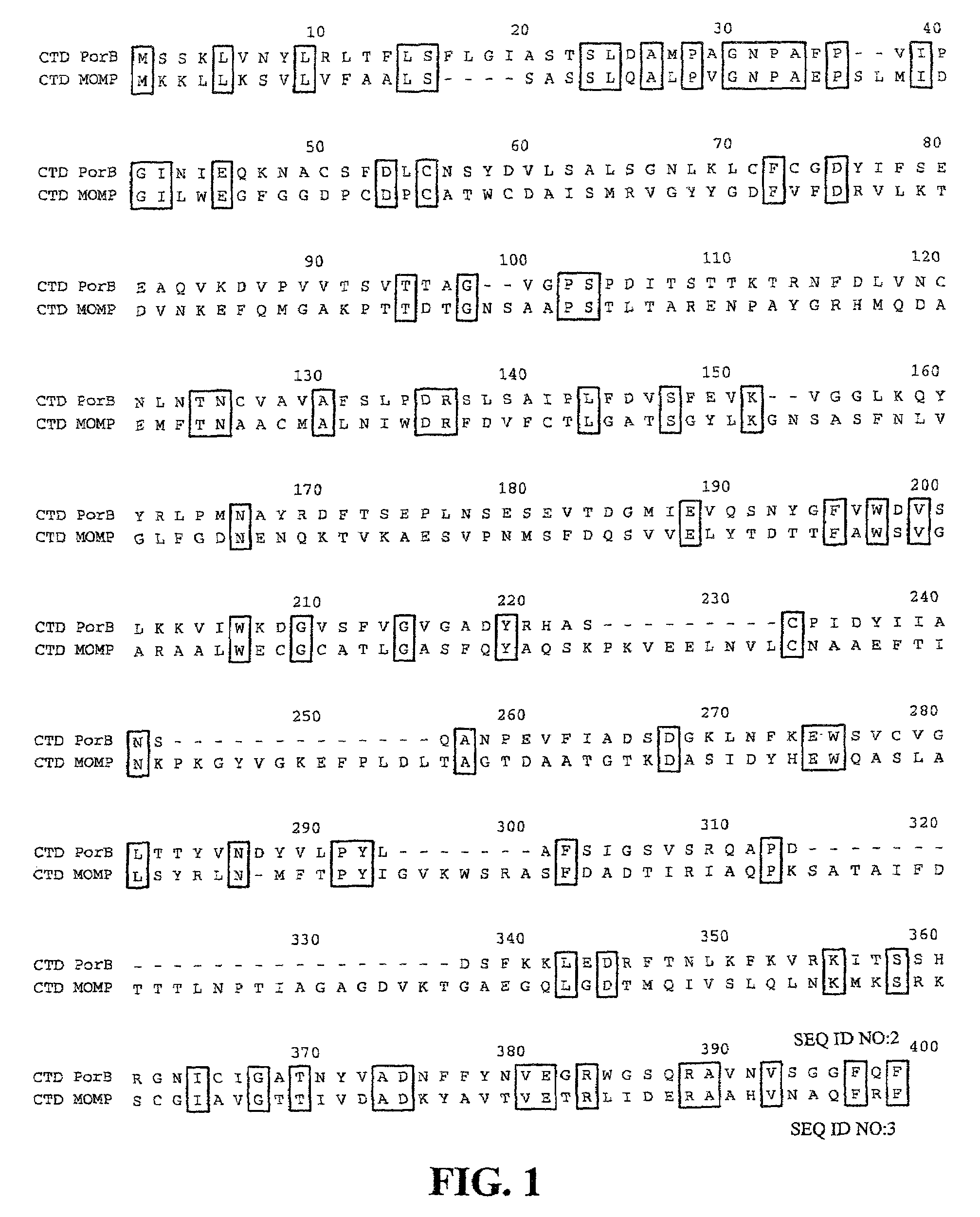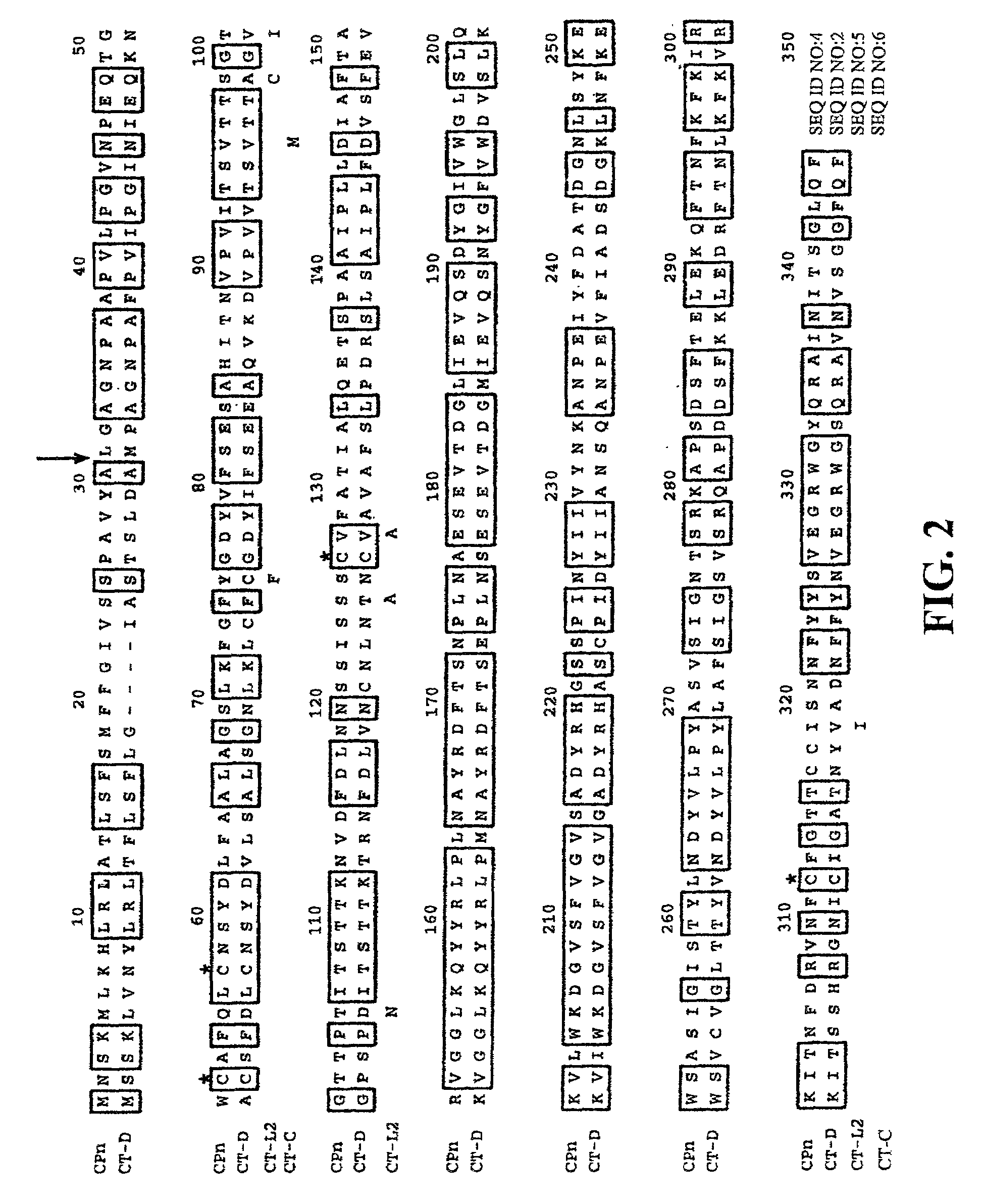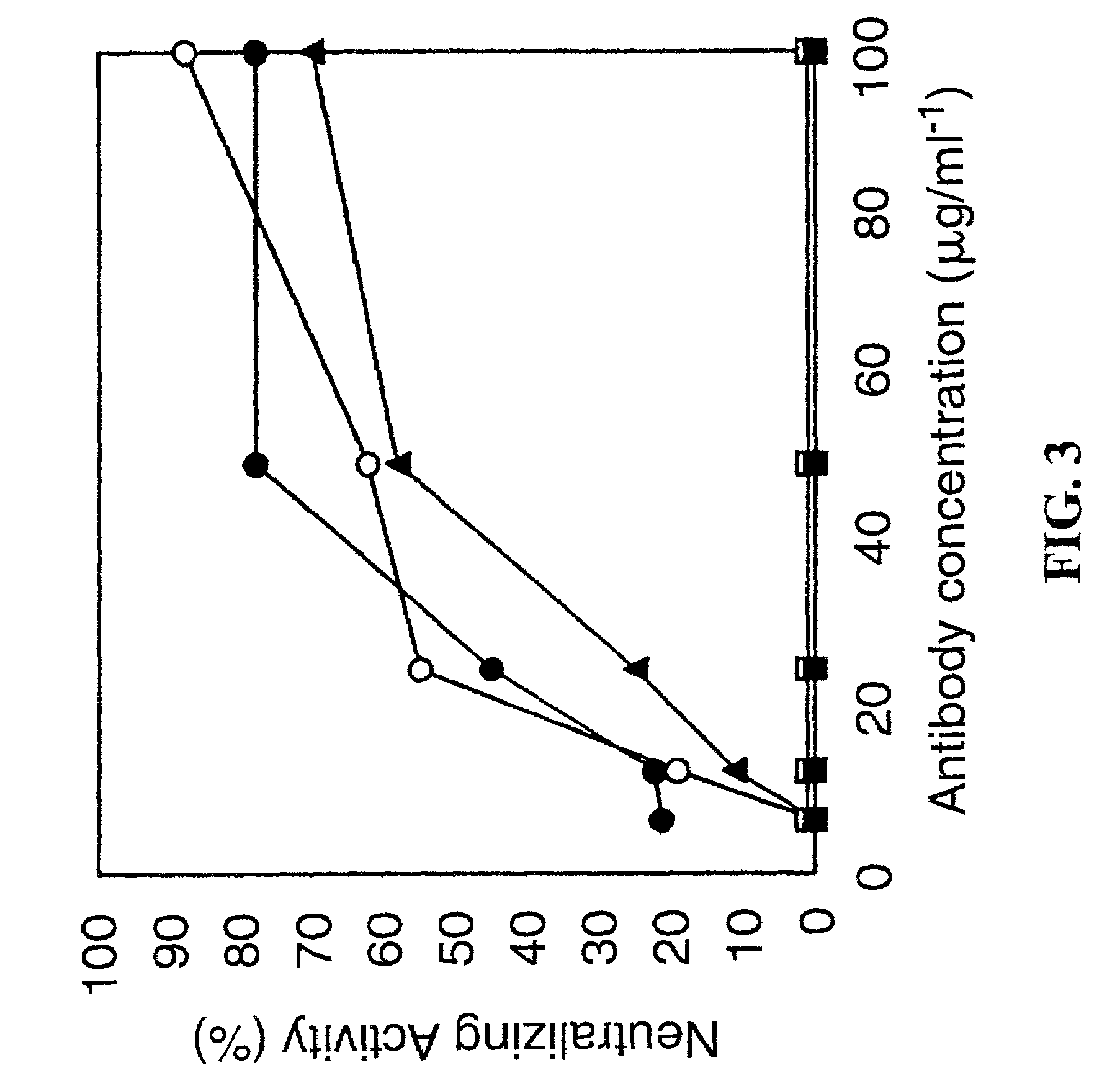Porin B (PorB) as a therapeutic target for prevention and treatment of infection by Chlamydia
a technology of porin and chlamydia, which is applied in the field of prevention and treatment of infectious diseases, can solve problems such as significant health problems, conventional treatments are problematic, and heart disease, and achieve the effects of reducing the risk of infection
- Summary
- Abstract
- Description
- Claims
- Application Information
AI Technical Summary
Benefits of technology
Problems solved by technology
Method used
Image
Examples
example 1
Analysis of PorB Sequence—Comparison to Major Outer Membrane Protein (MOMP)
[0116]Genome sequence analysis revealed a number of predicted outer membrane proteins (see Stephens et al. 1998 “Genome sequence of an obligate intracellular pathogen of humans: Chlamydia trachomatis” Science 282:754–759). One such predicted outer membrane protein, encoded by the predicted open reading frame CT713, was selected for analysis, and referred to herein as PorB. The nucleotide and amino acid sequences of PorB (CT713) are available within the complete sequence of the genome at GenBank Accession No. NC—000117, with the amino acid sequence at GenBank Accession No. gi|3329169. The open reading frame corresponding to PorB is the complement of nucleotide residues 3616 to 4638 of GenBank Accession No. AE001342. The nucleotide and amino acid sequences of PorB of C. trachomatis are provided in the Sequence Listing as SEQ ID NOS:1 and 2, respectively. Alignment of the amino acid sequence of PorB with the ami...
example 2
Analysis of PorB Sequence—Comparison of PorB Amino Acid Sequences from Different Serovars
[0119]When compared with other serovars of C. trachomatis, MOMP has four distinct variable segments which correspond to surface exposed regions of the protein. Serovar designations have been related to the differences in these variable segments of MOMP (Stephens et al. (1988) J. Exp. Med. 167:817–831). In order to determine whether this serovar variation is also characteristic for PorB, the sequence of PorB between serovars was compared.
[0120]FIG. 2 provides an alignment of the amino acid sequences of PorB from the C. trachomatis serovars D (CT-D) (SEQ ID NO:2), L2 (CT-L2) (SEQ ID NO:5), and C (CT-C) (SEQ ID NO:6), as well as the amino acid sequence of PorB from C. pneumoniae (CPn) (SEQ ID NO:4). The PorB of C. trachomatis and C. pneumoniae are 59.4% identical. C. trachomatis serovar L2 and C differences are indicated below the amino acid sequence. The cysteines are indicated with an asterisk ab...
example 3
Expression of PorB in E. coli
[0123]PorB was predicted to be in the outer membrane through a variety of protein localization programs such as PSORT (K. Nakai, Human Genome Center, Institute for Medical Science, University of Tokyo, Japan). A leader sequence cleavage site for C. trachomatis PorB was predicted to be at amino acid 26 (FIG. 2). The complete gene including the leader sequence was cloned into E. coli with a HIS tag at the C-terminal end of PorB and expressed. The protein was affinity purified by nickel column chromatography.
[0124]PorB expressed in E. coli was localized to the outer membrane fraction as determined by an immunoblot using an antibody to the C-terminal HIS tag. E. coli porins were also detected in this outer membrane fraction by Coomassie stain. The presence of PorB was primarily localized to the outer membrane suggesting that PorB has the necessary signal(s) to be transported to the outer membrane by E. coli.
PUM
| Property | Measurement | Unit |
|---|---|---|
| density | aaaaa | aaaaa |
| pH | aaaaa | aaaaa |
| volume | aaaaa | aaaaa |
Abstract
Description
Claims
Application Information
 Login to View More
Login to View More - R&D
- Intellectual Property
- Life Sciences
- Materials
- Tech Scout
- Unparalleled Data Quality
- Higher Quality Content
- 60% Fewer Hallucinations
Browse by: Latest US Patents, China's latest patents, Technical Efficacy Thesaurus, Application Domain, Technology Topic, Popular Technical Reports.
© 2025 PatSnap. All rights reserved.Legal|Privacy policy|Modern Slavery Act Transparency Statement|Sitemap|About US| Contact US: help@patsnap.com



